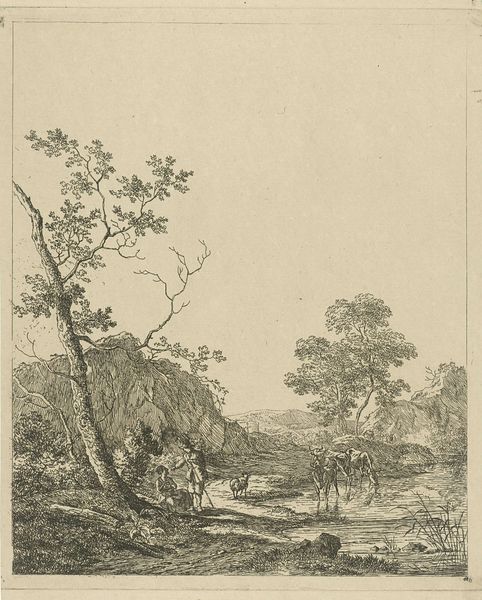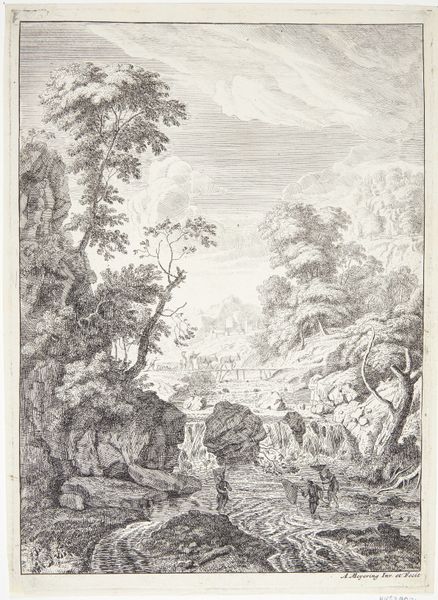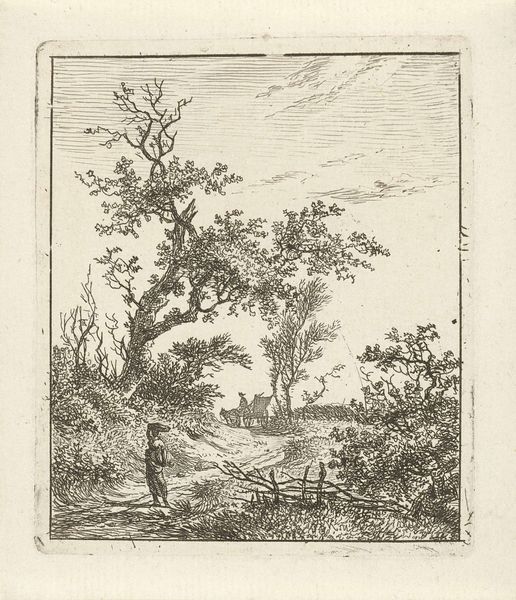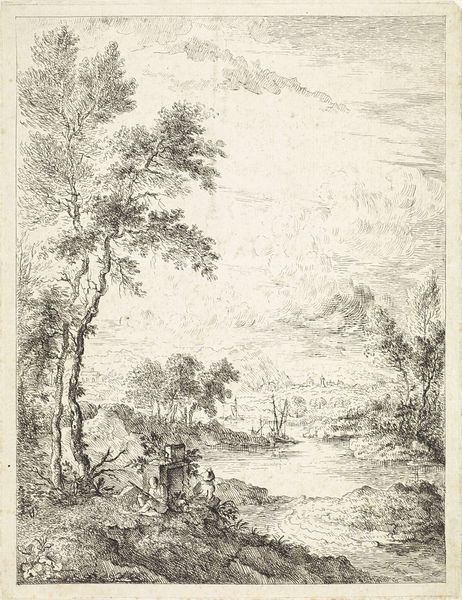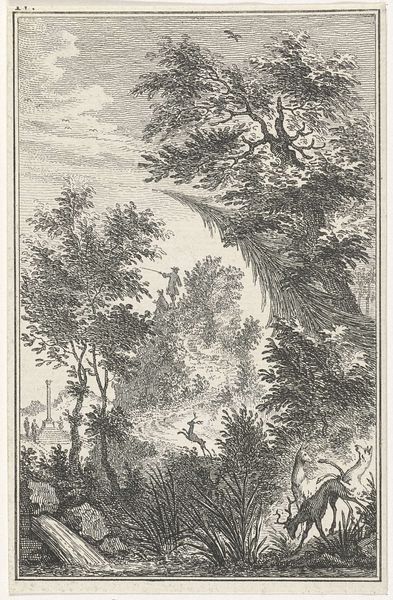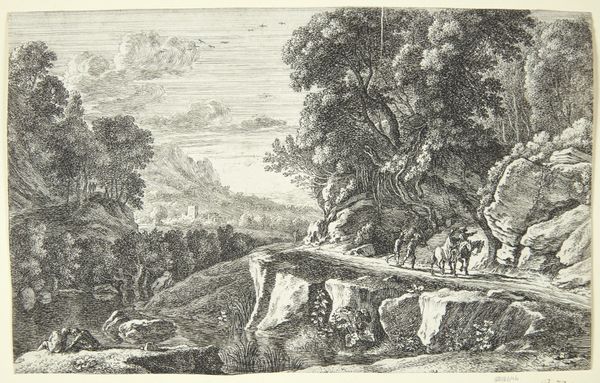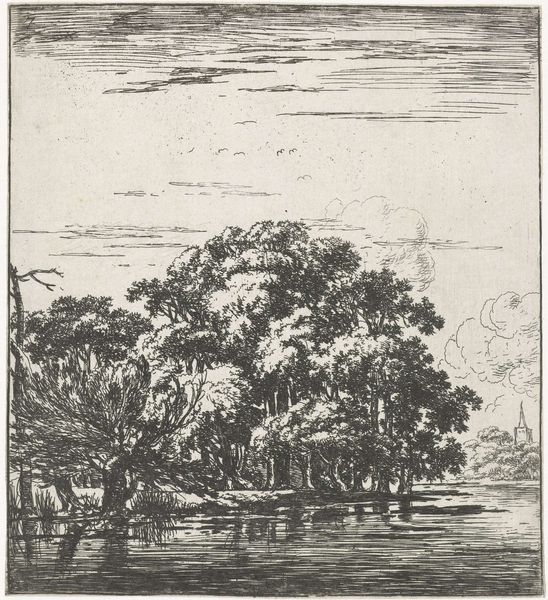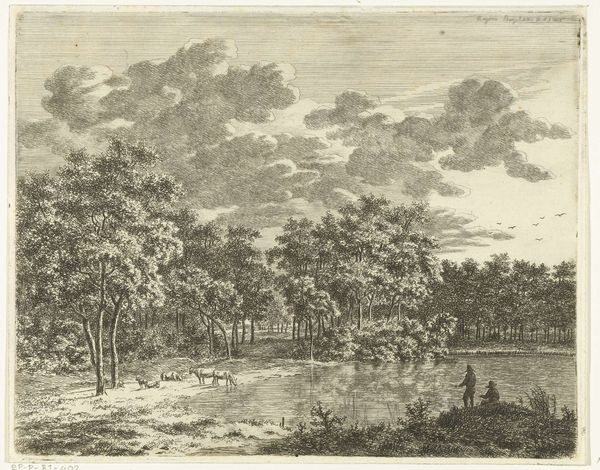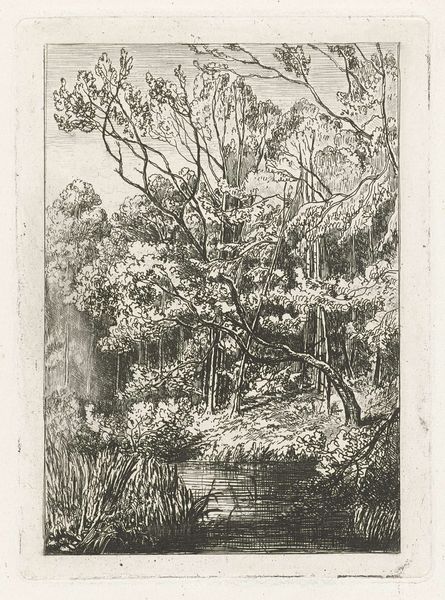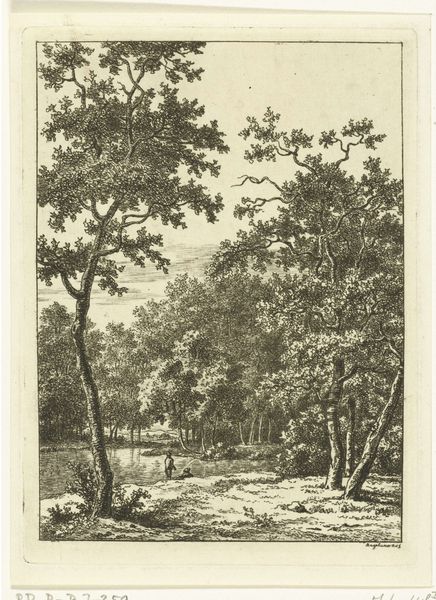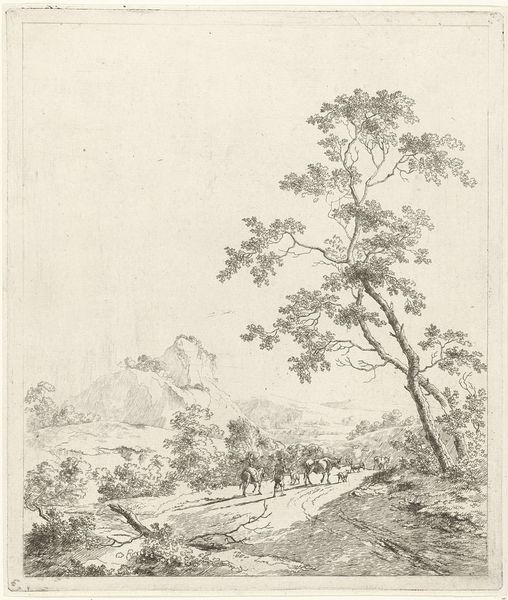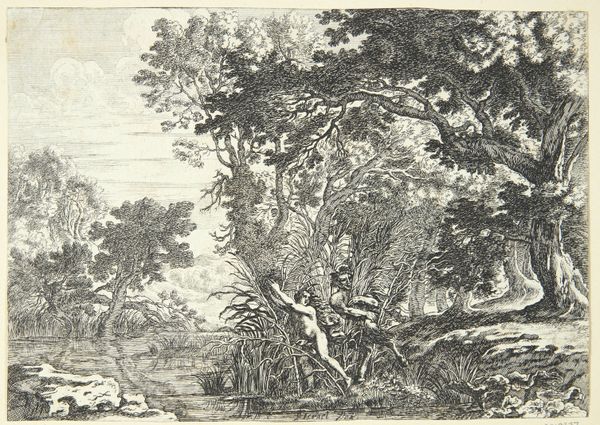
Dimensions: 160 × 110 mm (image); 168 × 121 mm (sheet)
Copyright: Public Domain
Rodolphe Bresdin made this etching, Bathing Woman and Time, sometime in the mid-19th century. It presents us with an allegorical scene full of the symbolism that was so important to the art world of its time. Look closely at the image. The natural landscape seems to both nurture and threaten the woman. We see her in a state of vulnerability, and there's a skeleton lurking in the rocks. It's easy to see the strong influence of Romanticism here, particularly its interest in the power of nature. The French Romantics were also very interested in the macabre and in the concept of the "sublime," that is, the power of nature to inspire awe, and even terror, in the human mind. Bresdin was something of an outsider to the established art institutions of his day. He struggled financially and never achieved mainstream success. His work, like this etching, can be seen as a rejection of academic artistic conventions, and an embrace of the power of nature, dreams, and the imagination. To fully understand this image, one would benefit from researching the cultural milieu of 19th-century France. By exploring the philosophical, literary, and artistic trends of the time, we can gain deeper insights into the meanings embedded in this haunting and evocative work.
Comments
No comments
Be the first to comment and join the conversation on the ultimate creative platform.
